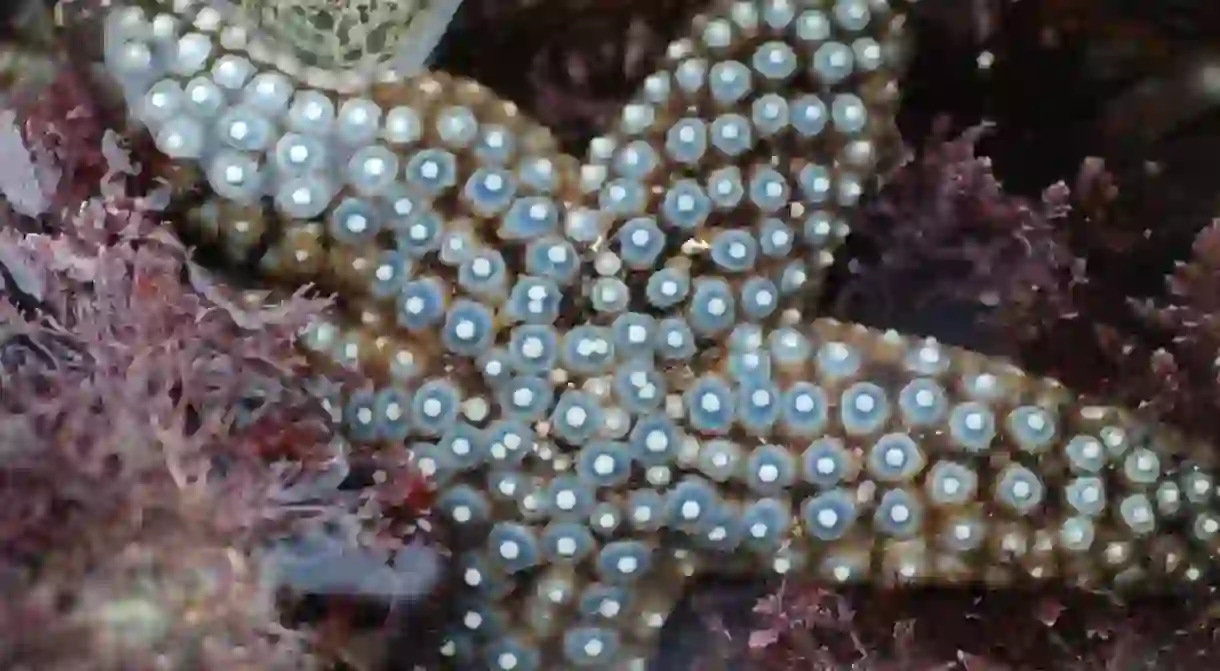A Guide to Tide-Pooling in San Diego

During winter, San Diego’s tide pools provide yet another reason to visit the Southern Californian beaches. These shallow pockets of sea life are synonymous with the colder beach days of SoCal. Here are the best tips and tricks to tide-pool your way around San Diego.
While the beach is often associated with warm summer days, the winter months are the best time to explore the tide pools in San Diego. Formed during low tides when ocean water is left behind in rocky crevices, tide pools are teeming with sea life. They are home to hundreds of organisms from sea anemones to hermit crabs, offering a glimpse into life under the sea. These tips will help you decide when and where to go for the optimal tide-pool experience.

When to go
In the summer, low tides happen in the middle of the night, so late fall and winter (November through March) are the best times to go tide-pooling in San Diego. During those months, low tides occur during the day. In the winter, there are also negative tides—when the water level is below average—which allow people to observe even more sea life than normal.
The timing of the tides changes on a daily basis, so checking a tide table before hitting the beach is essential. According to the National Park Service, the ideal time range for visiting tide pools is from up to two hours before the low tide (when the waters are receding) to two hours after the low tide (when the waters are coming back in).

Where to go
There are numerous tide pools throughout San Diego, each offering a unique experience. Here are three of the best options:
Cabrillo National Monument: Named for Juan Rodriguez Cabrillo, the Spanish explorer who first arrived at San Diego Bay, the national monument is home to hikes, a historic lighthouse, and a protected tide-pool area. At the visitor center, rangers provide additional information on what can be seen in the tide pools.
Dike Rock: Located north of Scripps Pier in La Jolla, Dike Rock is part of the La Jolla Underwater Park marine reserve. A favorite spot for biology students from UCSD, it’s named for the volcanic rock found there, which provides an ideal habitat for sea anemones, crabs, and mussels.
Cardiff State Beach: The tide pools lie just south of the beach’s parking lot. They are also home to 45-million-year-old sedimentary rocks that contain clam fossils.
Tips
1. To better understand what you’re observing, it’s a good idea to reference a guidebook or to download the California Tidepools App. Birch Aquarium also offers guided tours for those looking for something more structured.
2. Bring sturdy footwear as the rocks can be slippery from water and algae.
3. Even in the winter months, sunscreen is a must.
4. It’s ok to touch animals found in the tide pools as long as it’s done carefully. “A general guideline is to only touch animals as gently as you would touch your own eyeball,” according to Cabrillo National Monument.
5. No animals, shells or rocks can be removed from the tide-pool area.













